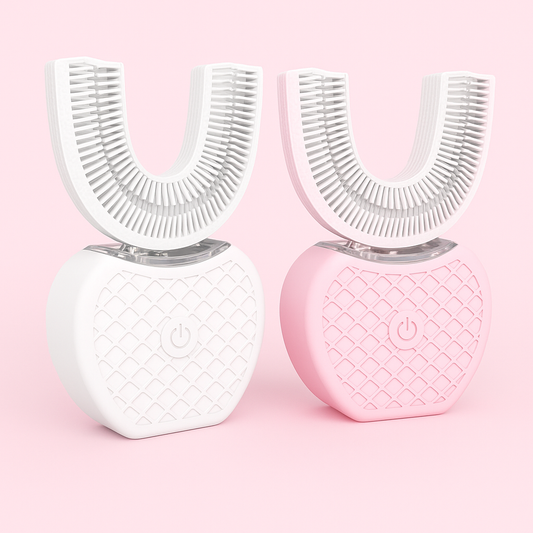Introduction: Why consider a fluoride-free swap?
More consumers in 2025 are searching for alternatives to traditional oral-care formulas — terms like "good whitening toothpaste", "toothpaste without fluoride", and "best toothpaste for whiter teeth" are trending. If you're exploring a fluoride-free route but still want effective stain reduction, less plaque, and healthier gums, a targeted formula that combines xylitol and niacinamide can be an excellent choice. This article explains the science, compares alternatives, outlines how to choose the right product, and helps you transition safely while maximizing whitening and oral health benefits.
Quick overview: What xylitol and niacinamide do
- Xylitol: A sugar alcohol that starves harmful oral bacteria, reduces plaque formation, and stimulates saliva, which helps neutralize acids and protect enamel.
- Niacinamide: Vitamin B3 with anti-inflammatory effects that can improve gum health and mucosal repair, helping gums look healthier and teeth appear brighter by contrast.
Together in a toothpaste with xylitol and niacinamide, these ingredients offer complementary benefits for stain prevention, gum care, and long-term oral environment improvement without relying on peroxide or fluoride.
Why some people choose toothpaste without fluoride
- Personal or family preference for non-fluoride products.
- Concerns about fluoride intake in young children or regions with high fluoridation.
- Desire for alternative active ingredients that address plaque, inflammation, and staining.
Important note: fluoride remains a proven, evidence-based tool for cavity prevention. If you switch away from fluoride, do so intentionally — choose a formula that offsets cavity risk with xylitol and maintain excellent home care and regular dental visits.
The evidence: How xylitol supports oral health and whitening
Research over decades supports xylitol’s role in oral health. Rather than bleaching teeth, xylitol reduces the biological drivers of staining and decay:
- It inhibits the growth and adhesion of Streptococcus mutans and other acid-producing bacteria in plaque.
- It stimulates saliva flow, improving natural remineralization and acid neutralization after meals.
- By lowering plaque accumulation, it helps prevent the surface discoloration that makes teeth look dull.
For people seeking a toothpaste that whitens teeth without abrasive scrubbing or peroxide, xylitol supports a gradual, maintenance-style whitening that improves tooth appearance by controlling the causes of staining.
Niacinamide: Why vitamin B3 belongs in oral care
Niacinamide is better known in skincare, but the oral cavity benefits from its anti-inflammatory and barrier-supporting actions:
- Reduces gingival inflammation, which can reduce redness and swelling and improve gum-tooth contrast.
- Supports mucosal repair and tissue resilience, promoting comfort during brushing and encouraging consistent hygiene routines.
- When gums are healthier and less inflamed, the overall smile looks brighter — a critical but often-overlooked element of "whitening".
Look for niacinamide toothpaste for a gentler, inflammation-centered approach rather than aggressive bleaching.
How the combination fights stains and supports tooth health
While peroxide-based whitening targets intrinsic and extrinsic stains directly, xylitol + niacinamide formulas take a preventative and restorative route:
- Xylitol decreases plaque and bacterial staining potential.
- Niacinamide improves gum health so teeth appear cleaner and more contrasted.
- Gentle polishing agents, when combined, remove surface stains without eroding enamel, which helps maintain long-term whiteness.
Comparing options: Fluoride, peroxide, abrasive whiteners, and xylitol/niacinamide
- Fluoride-containing pastes: Best for cavity prevention. If you have high caries risk, discuss with your dentist before removing fluoride.
- Peroxide-based whiteners: Effective for faster whitening but can increase sensitivity and are not ideal for daily use over long periods.
- Abrasive whitening pastes: Can remove surface stains but risk enamel wear if too abrasive.
- Xylitol + niacinamide formulas: Slower cosmetic changes but safer for daily use, improved gum health, and reduced plaque-driven discoloration.
What to look for on the label: a practical checklist
When you compare products marketed as "toothpaste whitening best" or "toothpaste that whitens teeth", evaluate these elements:
- Presence of xylitol, and preferably the concentration listed (indicates meaningful dose).
- Niacinamide or another documented anti-inflammatory agent.
- Low-abrasivity polishing agents (look for terms like "low RDA" or "gentle silica").
- Clear labeling about fluoride content — "fluoride-free" or "fluoride toothpaste free" if that is your preference.
- Third-party testing or clinical trial claims you can verify on the brand’s site.
How to switch safely: step-by-step transition plan
- Consult your dentist, especially if you have a history of cavities or restorations.
- Choose a high-quality toothpaste without fluoride that lists xylitol and niacinamide.
- Use it twice daily with a soft-bristled brush and two-minute sessions; do not over-scrub.
- Maintain flossing and routine dental cleanings to detect early decay or enamel changes.
- If you experience increased sensitivity or new decay, re-evaluate and consider alternating with a fluoride rinse or toothpaste under professional guidance.
Daily oral-care routine to maximize whitening and health
- Morning: Brush with your chosen xylitol + niacinamide toothpaste; rinse minimally to keep beneficial residues on teeth.
- After meals: Chew xylitol gum or use xylitol mints to stimulate saliva and reduce acid attack (avoid if allergic or advised otherwise).
- Night: Brush again before bed to reduce overnight plaque accumulation; floss or use interdental cleaners.
- Weekly: Avoid smoking and minimize staining beverages, or rinse with water after consuming tea, coffee, or red wine.
Detailed buying guide: how to identify the best toothpaste for whiter teeth without fluoride
To refine your search for the best toothpaste for whiter teeth that’s also fluoride-free, prioritize:
- Ingredient transparency — avoid vague claims without an ingredient list.
- Science-backed active ingredients: xylitol and niacinamide prominently listed.
- Positive customer reviews focused on stain reduction and gum improvement, not just flashy advertising.
- Reputable retailers or brand websites that provide clinical summaries or links to studies.
Search phrases like "toothpaste with xylitol", "niacinamide toothpaste", and "good whitening toothpaste" on trusted storefronts and brand pages to compare ingredients and claims.
Common myths and misunderstandings
- Myth: Only peroxide whitens teeth. Reality: Peroxide whitens faster, but controlling plaque and inflammation through xylitol and niacinamide yields noticeable brightness over time without sensitivity.
- Myth: Fluoride-free always means "natural" and harmless. Reality: Fluoride-free requires compensatory measures; choose clinically supported alternatives and consult your dentist.
- Myth: More abrasion equals better whitening. Reality: Too much abrasion can thin enamel and make teeth look darker long-term.
Frequently asked questions (FAQ)
- Will xylitol whiten teeth better than whitening strips? Not in speed or degree. Strips and professional bleaching produce faster results. Xylitol reduces staining causes and supports gradual, sustainable brightness without sensitivity.
- Can children use xylitol toothpaste? Many xylitol products are formulated for safe use, but follow product age recommendations and pediatric guidance if avoiding fluoride in children.
- How long until I see results? Individual responses vary; expect gradual changes over weeks to months as plaque and inflammation decrease.
Real-world results: what you can expect
Users who switch to a high-quality toothpaste for whitening teeth that contains xylitol and niacinamide often report:
- Smoother tooth surfaces and fewer surface stains within several weeks.
- Reduced gum redness and bleeding, improving the appearance of the smile.
- Less reliance on abrasive whitening scrubs or frequent bleaching sessions.
Safety and interactions
Xylitol is safe for human use but toxic to dogs — store products securely. Niacinamide is generally well tolerated; if you have oral lesions or an allergic history, consult your dentist or physician. Always follow label instructions and seek professional care for dental pain or signs of infection.
Top search terms and how to use them (SEO-friendly guidance)
If you're researching or writing on this topic, incorporate keywords naturally. Target phrases that potential buyers use: "toothpaste without fluoride", "toothpaste with xylitol", "toothpaste whitening best", "best toothpaste whitening teeth", "toothpaste that whitens teeth", and "best toothpaste for whiter teeth". Use them in headings and product descriptions, but keep content helpful and not repetitive.
Where to buy quality formulas
One convenient source for research-backed, fluoride-free options is Havana Body. You can browse curated selections and learn more about ingredient-focused products by searching "toothpaste without fluoride", "toothpaste with xylitol", or "best toothpaste for whiter teeth" on their site. They list ingredient details and customer reviews to help you compare options.
Case study snapshot: A 12-week routine
Example results reported by users following a 12-week routine with a xylitol + niacinamide paste:
- Weeks 1–2: Noticeable reduction in gum sensitivity and better morning breath.
- Weeks 3–6: Measurable decrease in surface plaque; teeth feel smoother.
- Weeks 7–12: Visible improvement in overall brightness and gum health, reduced need for frequent abrasive whitening.
Individual results vary, but this timeline matches the mechanism of action: reducing plaque and inflammation produces gradual cosmetic improvement rather than immediate bleaching.
Final takeaway: Is this the right move for you?
Switching to a fluoride-free toothpaste that uses xylitol and niacinamide is a science-backed strategy for people who want a safer daily approach to whiter, healthier teeth without aggressive bleaching. It’s especially appropriate if you prioritize gum health, lower plaque levels, and long-term maintenance rather than immediate, dramatic whitening.
Conclusion and invitation
If you’re ready to try a targeted, evidence-informed alternative to conventional whitening pastes, consider exploring curated products that highlight xylitol and niacinamide. For a reliable selection and ingredient transparency, visit Havana Body. Search for "good whitening toothpaste", "niacinamide toothpaste", or "toothpaste that whitens teeth" to find science-backed, fluoride-free options.
Ready to make the swap? Explore Havana Body’s selections and purchase trusted formulas to support whiter, healthier teeth. Visit havanabody.com today to shop recommended toothpaste without fluoride and start improving your smile with ingredients that work.


